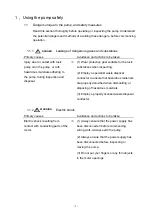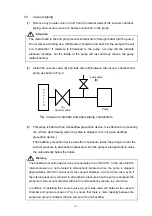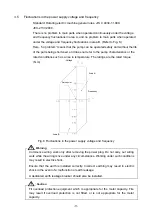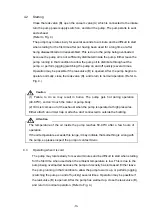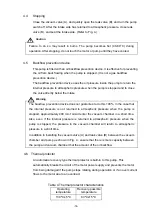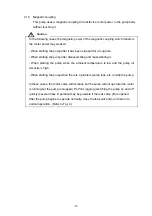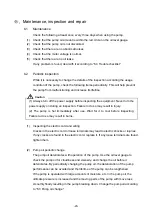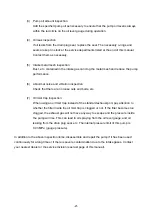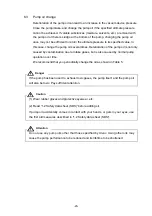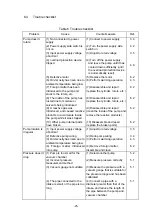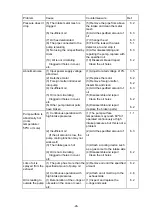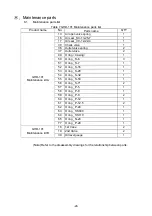
-15-
If the thermal protector is caused to operate, turn the switch off and contact Ulvac.
The motor is extremely hot at this time. Do not touch it. (Refer to “6.4 Trouble
checklist”.)
Failure to do so may result in burns. The pump surfaces become hot (40-80ºC). After
stopping, do not touch the motor or pump until they have cooled.
4.7
Gas ballast valve
This pump is fitted with a gas ballast valve as standard. It is effective when water
vapor or other condensed gases are introduced to the pump.
After condensed gases are introduced to the pump, they are converted to liquids by
the pump’s compression process, mixed with the pump oil, and are circulated around
the pump. If this happens, it is the same as when oil with a high water vapor content
is used, and the ultimate pressure increases. The lubrication properties of the oil also
decrease, and the life of the shaft seal is shortened.
If air or dry nitrogen is introduced from the gas ballast valve directly before the
pump’s compression process, then the condensed gases are not converted into
liquids; they are expelled through the exhaust together with the air. When using the
gas ballast valve, the higher the pump temperature the higher the “gas ballast effect”.
So, before introducing condensed gases to the pump, open the gas ballast valve and
operate the pump for approximately 20 minutes. When the temperature has risen to
about 70
º
C, open the vacuum valve (A) and operate the pump. (Refer to Fig. 4.)
The “gas ballast effect” may be insufficient when the temperature is low.
If the gas ballast valve is left open when condensed gases are not being introduced
to the pump, not only may pump oil be sprayed around and the power be reduced,
but the ultimate pressure will also be increased. Also, as there is a limit to the
amount of condensed gases (air or other gases that contain small amounts of water
or other vapor that may contaminate the oil) that can be dealt with by the gas ballast
valve, condensed gases may be mixed with the pump oil after large amounts of them
have been introduced to the pump or they were introduced without the gas ballast
valve being opened. If this occurs, close vacuum valve (A), close the gas ballast
valve, and leave the pump to operate without doing anything for a while. This will
cause the oil temperature to rise and allow the gas ballast effect to clean the oil.
(Refer to Fig. 4.)
Do this with the gas ballast valve closed until you reach the ultimate pressure. If the
pump oil is not cleaned after doing this for a long time, it is necessary to change the
pump oil.
Caution

